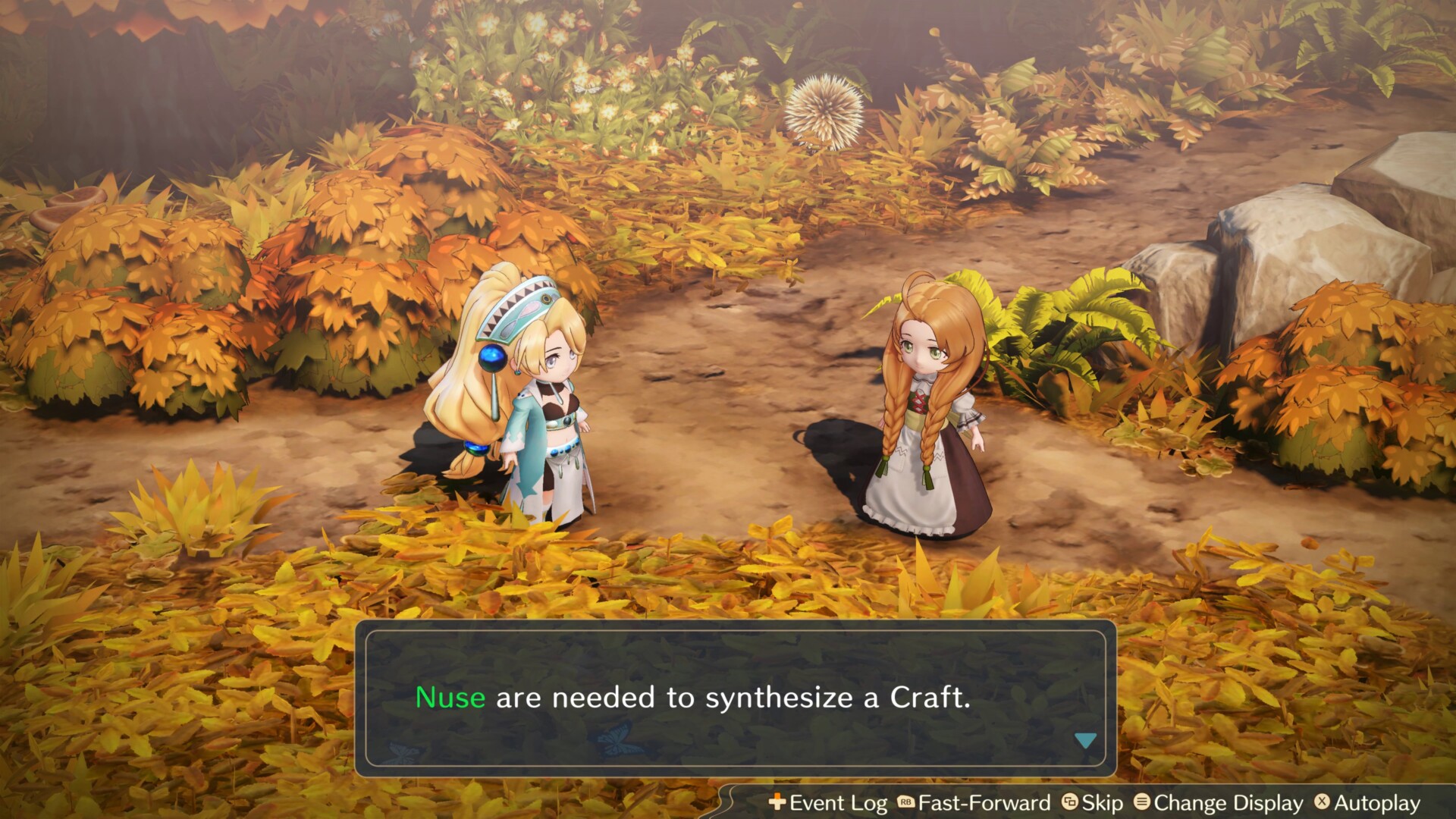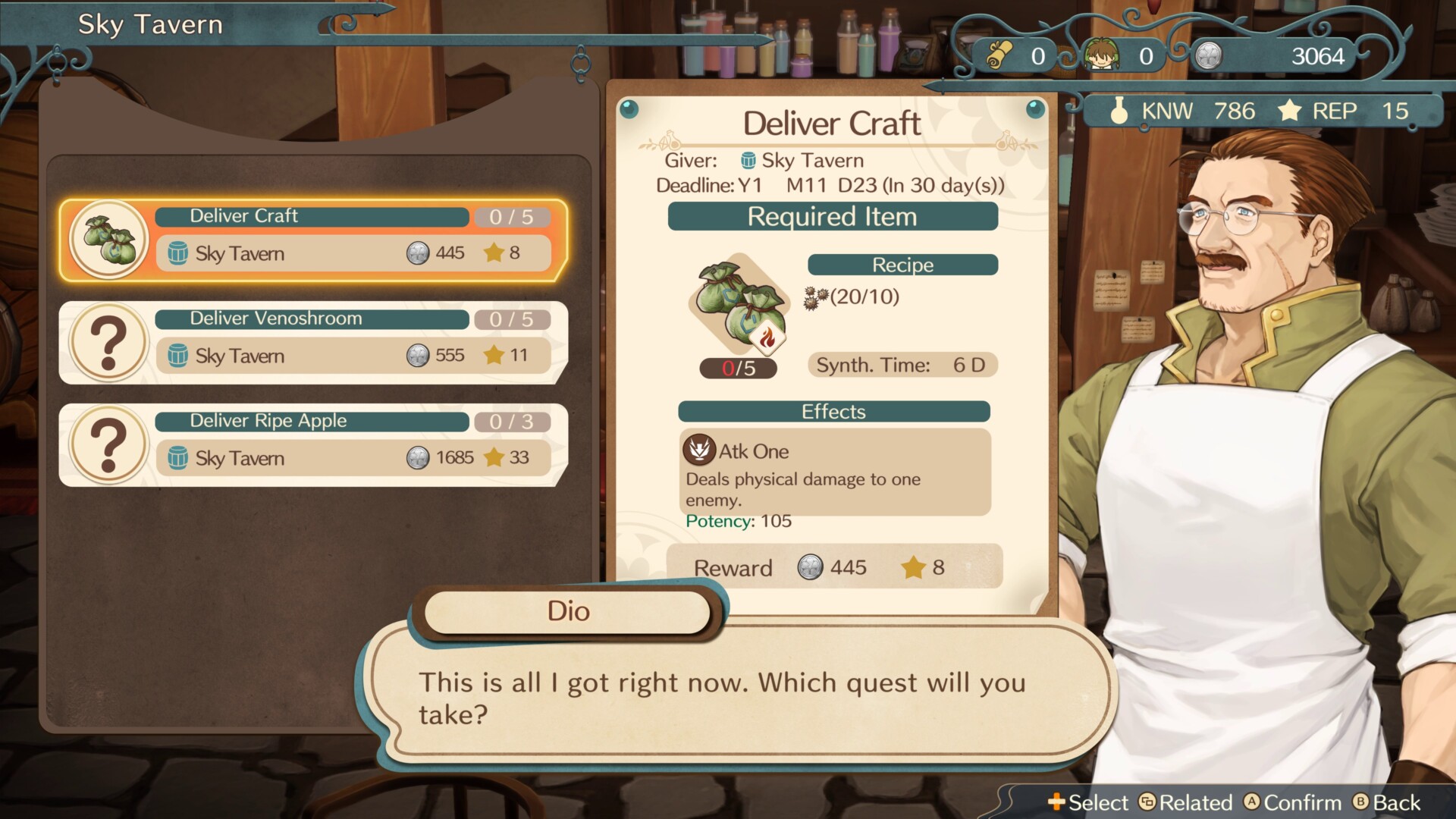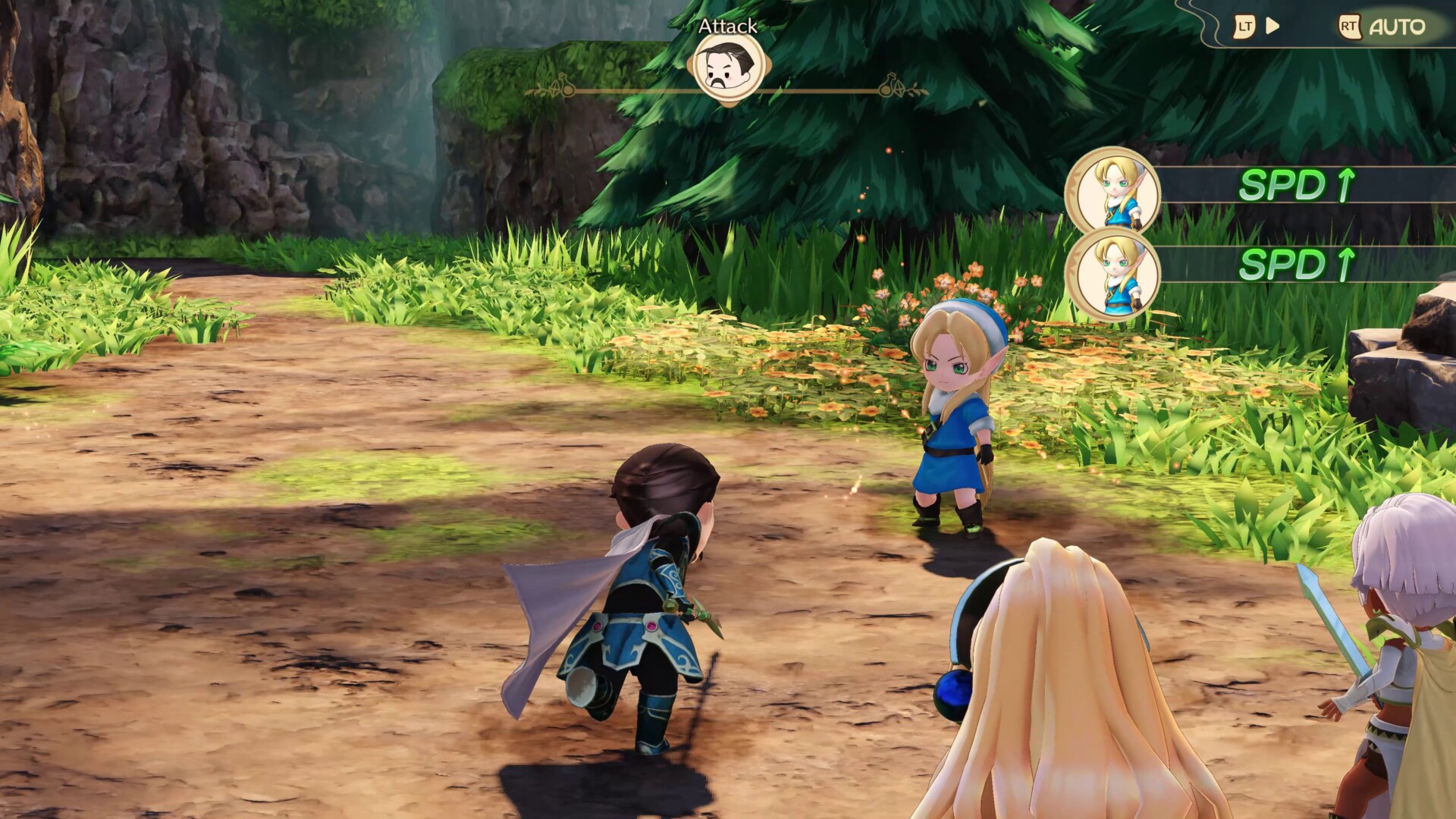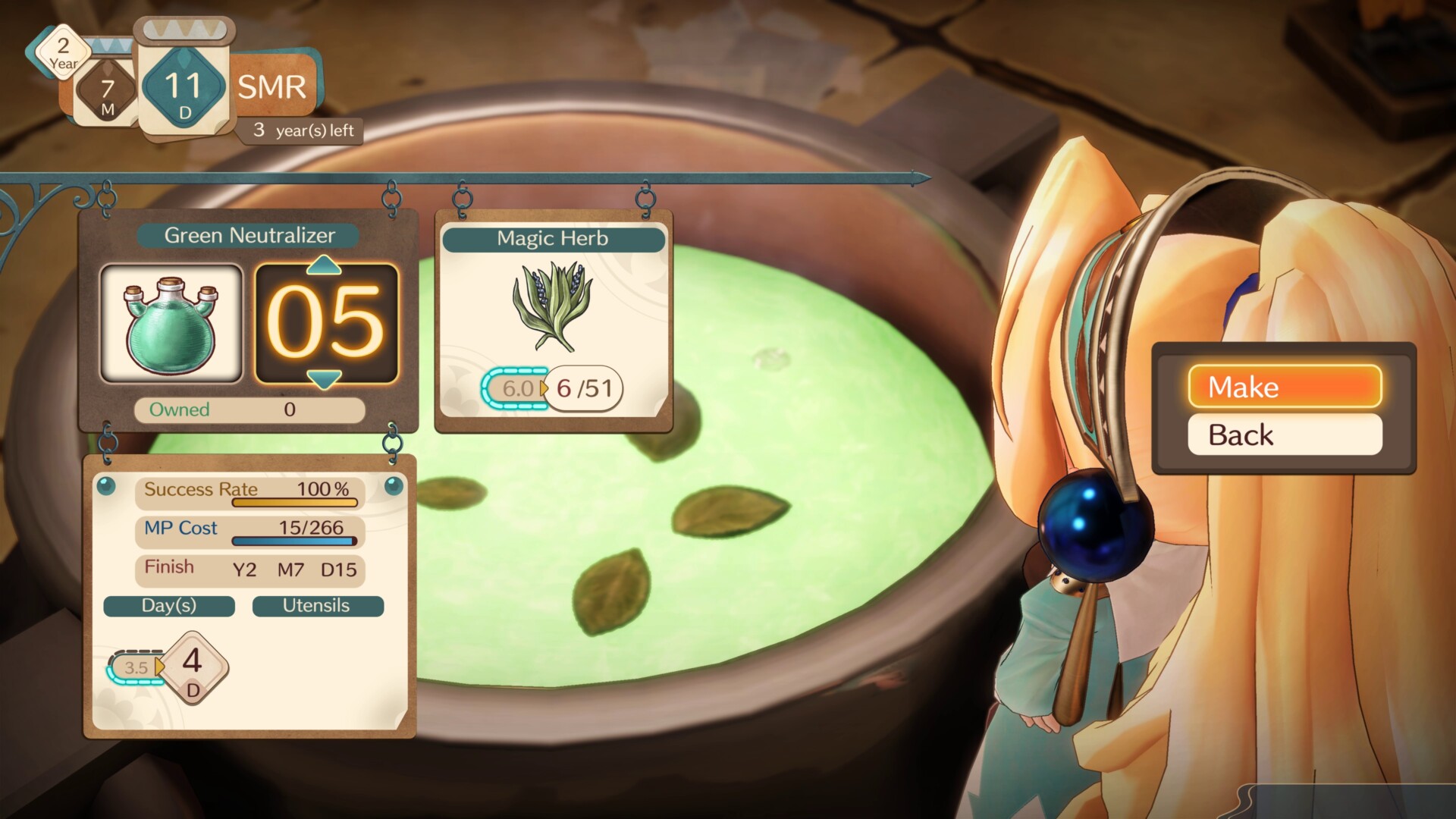
Atelier Marie Remake: The Alchemist of Salburg PS5 Review
I remember experiencing my first Atelier game with Atelier Iris: Eternal Mana on the PlayStation 2 way back in 2006. I had never heard of the series before, but unknown to me Atelier Iris was the sixth entry, as the series had never seen a release outside of Japan until that iteration. I have played so many since that point, and to think that the series has been sustainable enough to continue producing sequel after sequel, with the last game, Atelier Ryza 3: Alchemist of the End & the Secret Key, the 24th entry in the series. This poses a question. What about all these fans who want to play the older titles, what do we do about the games that were never translated? Koei Tecmo and Gust have the answer to that by remaking an older title. Technically now the 25th entry in the series, Atelier Marie Remake: The Alchemist of Salburg finally brings the first game into English, now with shiny new graphics and other new features. I am starting to enjoy this new trend of bringing Japanese-only titles into more languages by remaking them. It allows so many people to experience the origins of the games they enjoy.
From just an hour of play, it is easy to tell that Atelier Marie Remake has taken the original PlayStation game’s ideas and kept them intact. The game is much more simplistic than any of the recent entries and is more compact in its quests, alchemy and environments. It feels bitesize compared to the later PS3 and PS4 releases. Returning to this remake, and one that was part of the original release back on the PlayStation, is the time limit. This was in for a few Atelier games on the PlayStation 3 until they were removed again. A new feature for this remake is that the time limit is optional. Players can pick between having the game’s original five years, which I am sure a lot of hardcore fans will be delighted with, but for people who do not want to stress with the time limit then Unlimited Mode has been implemented in this release to allow people to play at their pace and end the game whenever they want to after the five-year limit has passed. This was probably the best way to go about it, as it pleases both sides of the spectrum when it comes to Atelier games and time limits.

Even though the game is small in scope, Gust has seen fit to add some quality-of-life features by improving the tutorials and having a nice hints page to look back on to revisit tips. There is also a quick navigation to get Marie around the city, which is mainly a town square made up of pathways coming off the centre that leads to different buildings that feature the various game’s mechanics, such as weapon and armour shops, taverns for jobs, hiring squad mates and checking out the local rumours, which are nicely highlighted with exclamation points on the quick travel menu. Gathering, a huge element of the Atelier games, has an auto feature that will randomly use a day to pick from a potential item that can be gathered in the current environment. This can sometimes lead to battles as enemies have a chance to interrupt the auto-gathering. These new elements take the stress away for players to able to simply have a nice time being an alchemist.
The star of the game is the underperforming Marie, a student at the Royal Academy of Magic situated in the city of Salburg. I say underperforming, she is currently rated the worst student in the academy, which is not exactly a title anyone wants, but she sticks with it because she has a genuine love of alchemy and wants to prove herself that she can be a qualified alchemist. Her instructor sees her love of the arts and offers her one last chance to graduate by giving her a workshop of her own and a time limit of five years, within this time Marie is tasked to create a rare high-quality item. It is down to the player to take Marie on this journey from clumsy wannabe to master alchemist over the time period, gathering ingredients, creating recipes and fulfilling requests from the townsfolks and meeting new friends along the way. Oh, and the time limit is for real, as once five years are over and there is no successful high-quality item created, then this will result in a bad ending. As for the general story, it’s very low-key, in that while things are happening within the kingdom, Marie does not care all that much, so her involvement in a general plot is more down to her interactions with the people she meets and the dialogue they share between each other.

That said, due to the small scope and pacing of the original title, and how that is brought across into this remake, the length of the game is much shorter than most Atelier titles. A general run through the five years takes around 9 or so hours, so do not feel too disheartened failing on the first run, as the second means you now understand the game’s mechanics and can get a good head start on making sure Marie qualifies on the next try. Time is important in Atelier Marie Remake, as every action takes some sort of day away. Performing alchemy takes a day away, but increasing the items created will take even more. Leaving the town to go exploring takes days to arrive at the destination. Inside those areas, known as gathering spots, each fight or material gathering takes a day to perform the action. Even returning to town costs days. While the first time can have a learning curve to understand its intricacies, there is good hints pages that can be looked back upon to rejolt the memory.
Gathering materials is critical to be able to synthesise the requests that are put on the job listing within the tavern. These jobs come with time criteria, which can be strict, so do not be surprised at failing a few of them, as there were many times I was either late or completely failed the request because I could not find a specific item or get back from the gathering spot to my alchemist shop and craft the item before the time expired. This causes Marie to get a bad reputation through reputation stars that are rewarded for successfully completing a requirement task within the time frame. Reputation seemed like a throwaway stat, as it is easy to gain back by taking on an easy request, one that can be done as soon as it is accepted, which the game highlights on the job listing that you already have the ingredients to finish the request. This equals easy money and reputation.

Money is valuable, as money is used to hire party members. There is no set team in Atelier Marie, as the player has a choice on who to hire around the city and take them into the gathering areas. The party consists of Marie and two other heroes who are on hire. The heroes will require a wage, paid on each trip out. These can be reduced by building a relationship with the hired band, cutting their price down as they befriend Marie. I counted 10 people that can be eventually hired within the story once their unlock criteria is met, often coming up from the rumours people talk about around time, which inform Marie of upcoming events that might happen during her exploration. Money is also used to buy new gear, weapons, items and alchemy tools. It can also be given to hire fairies who will perform some additional gatherings for Marie so that she does not have to spend time doing it herself. Depending on the rate and fairy will determine how good and fast they are at collecting. The more efficient fairies cost more cash.
As with any JRPG, battles are a fundamental part of the experience, and Atelier Marie Remake has turn-based combat, but it is not random. The enemies can be seen on screen, enabling them to be hit with Marie’s staff to give her team the advantage at the start of the battle. The battle system is on the basic side, as it misses all the advancements made over the years to the series to keep it faithful to the original experience. The three-party members can be put either in the front, middle or backline, which gives them debuffs and buffs, so the idea is to put range characters at the back and the melee guys at the front, with the middle line there as the standard placement. That is about as involved as it comes, as with limited skills, battles revolve around dealing damage or using skills that cost magic points. There is an auto-battle feature that does well for most fights. Even boss fights – which come up from rumours heard around town and hang around one of the gathering zones – I would use the auto-battle, with the occasional break to see how health was before re-enabling the feature and watching it kickass for me. I think that in itself speaks volumes to the depth of this game’s combat mechanics.

Included on the world map, and sometimes in the atelier where Marie works, are mini-games that add variety to spice up the standard gameplay loop of collecting, fighting and synthesizing. These will randomly appear and have Marie performing such actions as dodging incoming punis (think slimes from Dragon Quest) while running towards an apple tree, finding a golden salmon in a chest during a maze with bears patrolling or using a hammer to smash falling punis without getting overwhelmed with them. These are silly, fun distractions that bring a smile when they pop up during the game.
The remake adds a massive visual update over the original PlayStation visuals. It has transitioned from 2D pixel art to this very adorable 3D Chibi look. The reason it looks like this and not like the last few Atelier releases is to capture the essence of the original sprites. Those were also on the Chibi side, and so translating that into this 3d style is actually a great way to convert the big-headed character art into something that looks fitting. The character art within the visual novel-style dialogue scenes are standard character measurements, which can be a little disjointed from that cute in-game graphics modelling, but it works overall. Everything is so full of colour and warmth, and as I have always said with the past games, there is a sense of joy and heartfelt love when playing these games, and this is no different with the art, music and characters in Atelier Marie Remake.

This brings us to the closure of this review. I mentioned at the start that I enjoy this whole idea of remaking Japanese-only releases and bringing them out for the bigger market, which allows fans to finally legally see how their favourite franchises began. Atelier Marie Remake: The Alchemist of Salburg is fully committed to doing this while trying to keep intact the essence of the original title. Due to this, the game is much simpler than recent Atelier titles, trying to uphold how the title was first brought to life. There is quality of life enhancements that help remove some of the design from the that mid to late 90s to make the overall involvement for the player better, but it does not take away that there is a clear difference in the depth of mechanics and design compared to recent Atelier releases. Yet, I am still happy with how this has turned out because I wanted an experience that gave me what the original was, just so I could see how this series started out. 24 entries for a game series is something developers could only dream of having, so to see the origins of how all this sprouted into fruition is the whole point of this game.
Atelier Marie Remake: The Alchemist of Salburg will not be winning any awards for best Atelier entry, but its aim was never to achieve this. The whole point of this release is to bring the title to the non-Japanese market to celebrate the origins of the Atelier games for its 25th Anniversary, and that is exactly what Gust and Koei Tecmo have done. The bonus is that they decided to throw quality of life and visual improvements while keeping most of the mechanics intact to let fans discover how much the series has evolved over time from its infant beginnings on the PlayStation. Fans will enjoy seeing how it all began, the fascinating idea of hiring teammates and the implementation of the Atelier mechanics that fans have come to know over the years broken down into a much simpler form. I cannot fault the developers for putting in the effort to offer fans a piece of history that was once locked away in Japan. For that, Atelier Marie Remake: The Alchemist of Salburg does it the right way and somehow manages to put a smile on fans’ faces.
